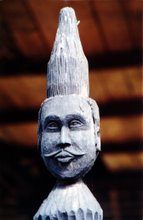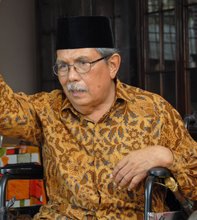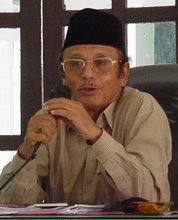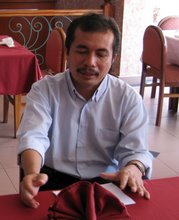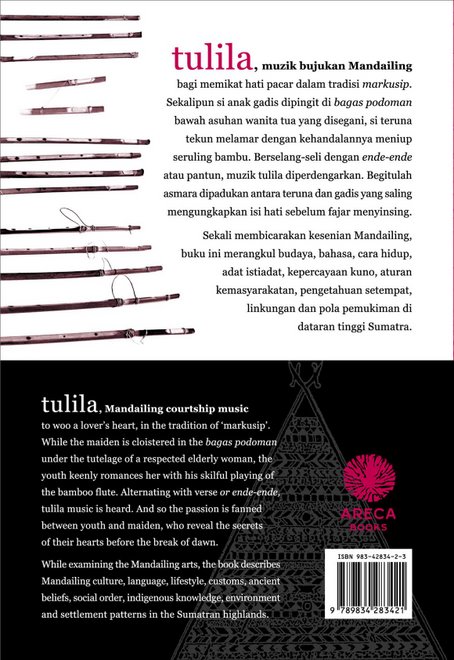
Review by BARBARA WATSON ANDAYA
KINTA VALLEY Pioneering Malaysia’s Modern Development
By Khoo Salma Nasution and Abdur-Razzaq Lubis
Publisher: Perak Academy, 384 pages(ISBN: 9-834-21130-9)
OVER the last century the Kinta River Valley has played a central role not only in the history of Perak but also in the evolution of modern Malaysia. While never losing sight of broader developments, Kinta Valley demonstrates that the appeal of “local history” ultimately rests on its ability to provide intimate details about places and people that do not appear in more general works.
One must also applaud the commitment of two independent scholars who tracked down and consulted restricted and rare material in archival records, scholarly publications and local sources.
This handsome volume is well written and organised, and supported by copious illustrations and maps. “Side bars” interspersed through the book present interesting vignettes, legends, and other information; the bibliography is exhaustive, and the index comprehensive.
The introduction by Professor Wang Gungwu, himself a Kinta product, offers insightful guidance to the book’s significance. Overall, Kinta Valley has established a bench-mark for the writing of local history in Malaysia and the Perak Academy should be congratulated for its part in the production.
The first chapter gives an overview of the early history of Perak and Kinta itself, ending with the Perak War and the initiation of British colonialism. Descriptions of Kinta as it was in the 1850s are a reminder of the amazing changes that have occurred since then.
Some readers may find it difficult to imagine that a hundred years ago elephants were a primary means of inland transport.
The authors then turn to the departure point of modern Kinta history: the development of the tin mining industry in the last quarter of the 19th century. This period witnessed the growth of several towns, notably Ipoh, which expanded from a “straggling uninteresting village” to the state capital we know today.
However, such development did not come without cost. Robbery and violent crime were not uncommon in a population of largely poor male Chinese, and fighting between secret societies was frequent. A sidebar of newspaper reports provides intriguing examples of the type of offences that came before the new court system introduced by the British.
Crimes by migrants could be partially solved by repatriation of “undesirables”, but it was far more difficult to control other persistent problems, notably fires (usually accidental), and health issues exacerbated by poor diet and the unsanitary conditions of mining settlements.
It is important to note that in many cases, Chinese leaders themselves attempted to deal with these problems, calling for a professional police force, organising their own fire patrols, donating to urban development, and working with the government to support hospitals and medical services.
In their detailed description of the expanding communication system, the authors show how the spread of rivers, roads and railways created new opportunities for the development of “agricultural colonization”. This turns attention away from Chinese migrants to the effects of economic growth on the Malay population, and the demographic changes brought about by the numbers of “foreign Malays” who now flocked to Kinta. Often from Sumatra, especially Mandailing, they were engaged in both padi farming and mining, and were among the earliest to take up land for cash crops such as coffee and pepper.
Although Europeans were now opening up rubber plantations with Tamil labourers, the tin mines remained the mainstay of Kinta’s economy. In a separate section, the authors discuss the history of mining, describing the techniques used by orang asli, Malays, and Mandailing, before turning to Chinese innovation and the final dominance of European dredging and hydraulic companies.
Huge open-cast mines certainly contributed greatly to Kinta’s prosperity, but the photographs in Kinta Valley provide sobering evidence of environmental degradation: one chapter tracks the damaging effects of tin mining, European game hunting, water pollution and deforestation.
Anyone interested in Perak history will gain much from two chapters that supply vignettes of the origin and development of Kinta’s tin mining towns. While Ipoh receives particular attention, the authors do not neglect the numerous smaller settlements which all have their own distinctive past.
Anyone interested in Perak history will gain much from two chapters that supply vignettes of the origin and development of Kinta’s tin mining towns. While Ipoh receives particular attention, the authors do not neglect the numerous smaller settlements which all have their own distinctive past.
Indeed, it is in the latter descriptions – truly “local history” – that the strength of their research is most evident. These chapters also document the radical shift in Kinta’s demography, notably in the larger towns. Despite strong representation from other races, who are all given due consideration, the urban population was dominated by Chinese dialect groups, especially Cantonese and Hakka.
The vibrancy of Ipoh’s social life – where entertainment ranged from Chinese drama and Malay bangsawan to European racecourses – survived the stagnation of World War One and even the depression, so that in the late 1930s Ipoh was still known as a town of “fabulous wealth”. Nonetheless, economic retrenchment could not fail to have an effect on Kinta’s expansion, and increasing poverty laid the ground for labour unrest and recruitment into the communist party.
Against this background, the book turns to the Japanese conquest of Malaya in 1942, with one particularly graphic illustration showing the “human bridges” over which the invading forces crossed small streams. Using historical records and personal accounts to great effect, the authors offer a vivid picture of the impact of the Japanese Occupation on the daily life of ordinary people. Kinta became a centre for anti-Japanese resistance, memorably recorded in the history of Papan, one of the oldest towns in the Kinta Valley.
Against this background, the book turns to the Japanese conquest of Malaya in 1942, with one particularly graphic illustration showing the “human bridges” over which the invading forces crossed small streams. Using historical records and personal accounts to great effect, the authors offer a vivid picture of the impact of the Japanese Occupation on the daily life of ordinary people. Kinta became a centre for anti-Japanese resistance, memorably recorded in the history of Papan, one of the oldest towns in the Kinta Valley.
Kinta’s prominence as a focus for post-war communist insurgency is hardly surprising, given the difficult economic climate, the heritage of Chinese organisations, the numbers of Chinese squatters, and the extent of European capitalist enterprise. In an undeclared war – the “Emergency” – the largely Chinese residents in Kinta’s 600 “new villages” lived in what was tantamount to a police state. The measures taken during this period, the authors argue, were part of a process by which residential segregation “enhanced the conditions for racial polarization and racial politics in Malaya.”
Although the narrative then moves on to the communal politics of the 1950s, when Ipoh became a focus of political activity, it is fitting that the final chapter should be devoted to the orang asli, whose way of life has been most drastically affected by the economic, political and social changes in Kinta over the last century.
Kinta’s story is central to that of modern Malaysia, and this “local history” is thus a contribution to national history as well. Undoubtedly, some readers would have liked to see the volume brought up to the present, and would have welcomed a conclusion that summarised the book’s major findings. In the end, though, the most appreciative audience will be the people of Kinta itself, for whom “local”, state, family and personal histories are intertwined.
Barbara Andaya is Professor of Asian History at University of Hawaii.
